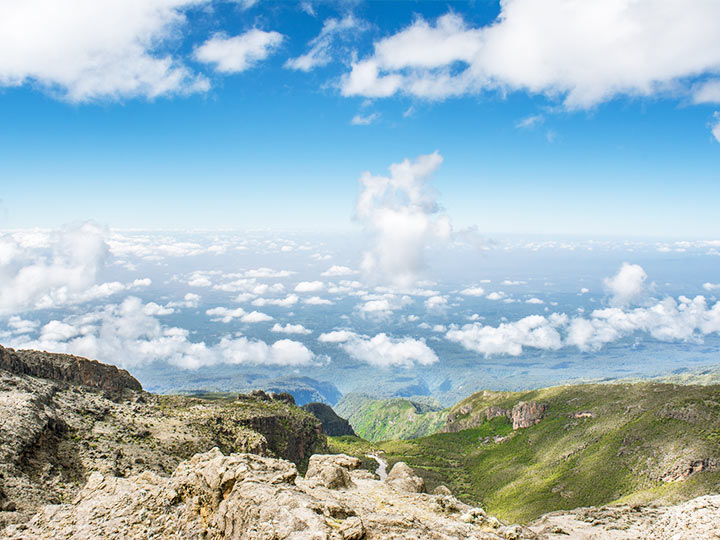What Are The Trail Conditions On Kilimanjaro?
The trails on Mount Kilimanjaro are well marked and maintained.
Technical skills are not required on our routes. There are only a couple places where scrambling (climbing on hands and feet) is required. There are no points where exposure to falling off a cliffside is a legitimate threat.
Your guides will be ready to spot you in any particularly challenging spots when necessary.
Trail Conditions in Ecological Zones
Given the significant altitude change from top to bottom, the topography changes drastically during the climb.
Rainforest Zone Trail Conditions
The journey begins in the beautiful rainforest at the base of Mount Kilimanjaro. This ecological zone gets an enormous amount of rainfall annually. So, the path here is usually wet and muddy. This is why it is important to have proper hiking boots or shoes that have good tread. Shorts and a tee shirt make the ideal outfit as long as it isn’t actively raining. Trekking poles also help to navigate the landscape.
Moorland and Alpine Desert Zone Trail Conditions
Farther up, in the moorland and alpine desert regions, the trail is usually very dry and dusty. However, this makes the path fairly easy to tackle as the ground is firm and stable. Although it is cooler, most of the times hiking with a baselayer and pants is sufficient.
Don’t forget to wear a cap and sunglasses to shield your face from the deceptively powerful sun, even if you don’t feel its heat. And apply sunscreen to any exposed skin. Have your jacket ready in case the winds and clouds pay you a visit.
Arctic Zone Trail Conditions
Finally, as you approach the summit you enter the artic zone. This is where you will encounter the harshest conditions. The average hiker wears four layers on top and three layers on the bottom during the push to the summit. It is very cold and windy.
The path to and from Uhuru Point requires a steep ascent and descent on loose gravel called scree. Trekking on this terrain can be especially tiring. Your feet sink into the substrate and the rock shifts under your bodyweight. Gaiters help keep the rocks from getting into your shoes and trekking poles will help you balance.
Depending on the season, it’s possible that there will be snow on the ground. However, most of the time it is hard packed and no cause of concern. (Note that it is very rare for crampons or microspikes to be used. You don’t need them unless we specifically instruct you to bring them).
